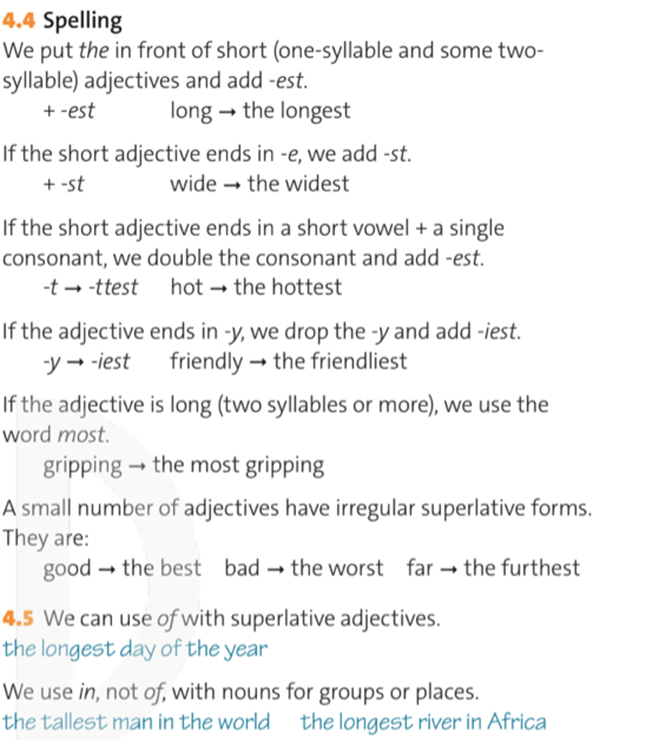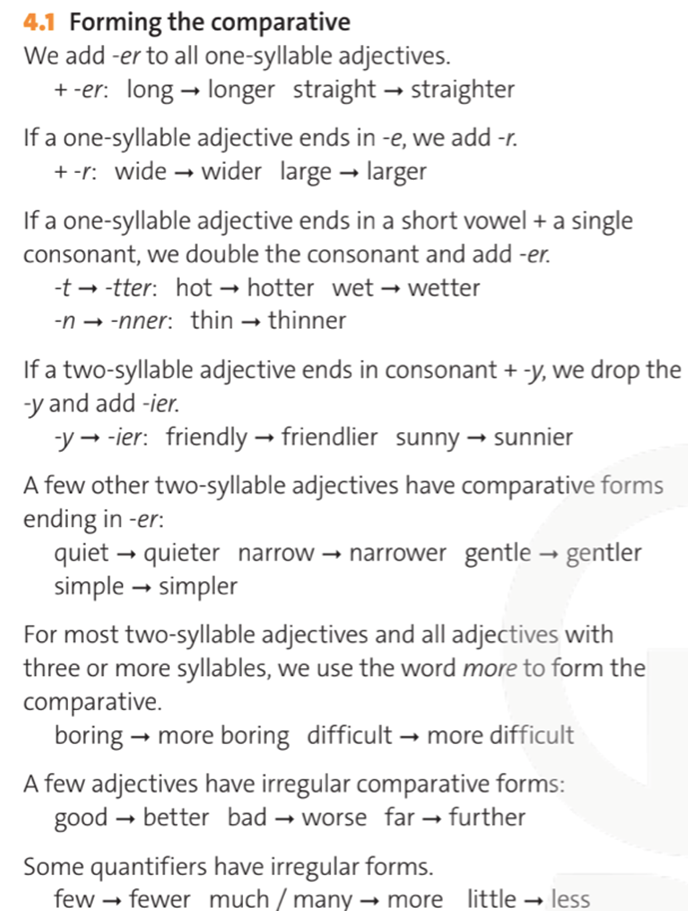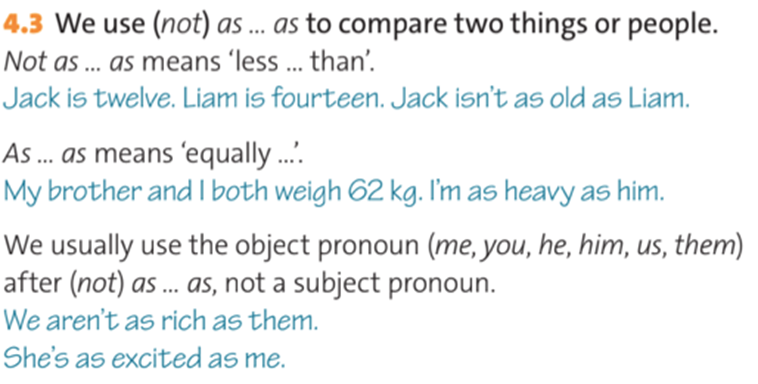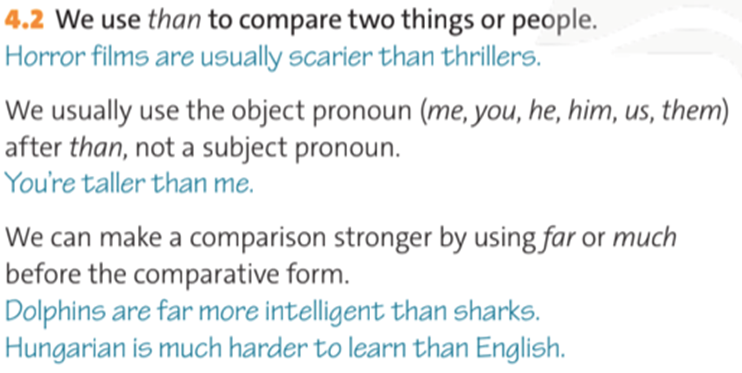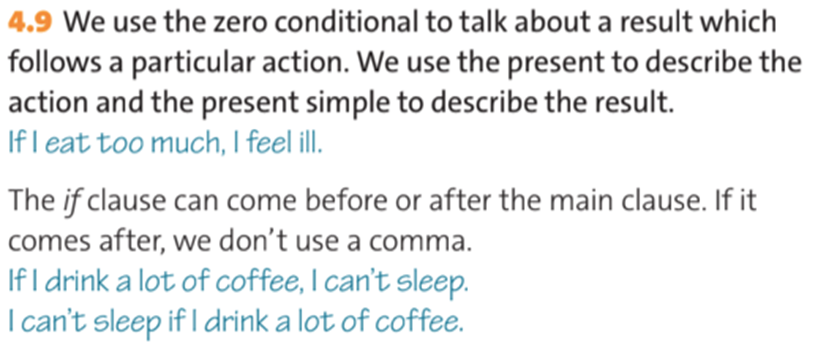Trả lời:
 Giải bởi Vietjack
Giải bởi Vietjack
Hướng dẫn dịch:
Chính tả
- Chúng tôi đặt trước tính từ ngắn (có một hoặc hai âm tiết) đuôi -est.
dài -> dài nhất
- Nếu tính từ ngắn kết thúc bằng -e, ta thêm -st.
rộng-> rộng nhất
- Nếu tính từ ngắn kết thúc bằng một nguyên âm ngắn + một phụ âm đơn, ta nhân đôi phụ âm rồi thêm-est.
nóng -> nóng nhất
Nếu tính từ kết thúc bằng -y, chúng ta bỏ -y và thêm -iest.
thân thiện -> thân thiệt nhất
- Nếu tính từ dài (hai âm tiết trở lên), chúng ta sử dụng từ most.
hấp dẫn -> hấp dẫn nhất
- Một số ít các tính từ có dạng so sánh nhất bất quy tắc. Đó là:
tốt -> tốt nhất
xấu -> xấu nhất
xa -> xa nhất
Hướng dẫn dịch:
Chính tả
- Chúng tôi đặt trước tính từ ngắn (có một hoặc hai âm tiết) đuôi -est.
dài -> dài nhất
- Nếu tính từ ngắn kết thúc bằng -e, ta thêm -st.
rộng-> rộng nhất
- Nếu tính từ ngắn kết thúc bằng một nguyên âm ngắn + một phụ âm đơn, ta nhân đôi phụ âm rồi thêm-est.
nóng -> nóng nhất
Nếu tính từ kết thúc bằng -y, chúng ta bỏ -y và thêm -iest.
thân thiện -> thân thiệt nhất
- Nếu tính từ dài (hai âm tiết trở lên), chúng ta sử dụng từ most.
hấp dẫn -> hấp dẫn nhất
- Một số ít các tính từ có dạng so sánh nhất bất quy tắc. Đó là:
tốt -> tốt nhất
xấu -> xấu nhất
xa -> xa nhất

